Unlike a car, a horse needs constant care and attention. Horses are not machines, they can be particular about what they eat, get extremely ill if fed the wrong substances, need to be rubbed down or groomed after work. Their feet need a lot of care particularly if the horse is doing road work. Hooves and shoes need attention from a farrier or blacksmith at least every 6 weeks.
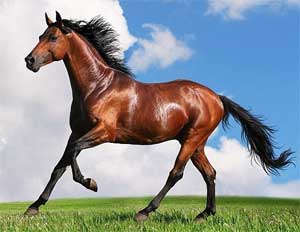
Before the advent of internal combustion a horse was an extremely valuable and important part of the economy, which moved at the pace and power of the horse.
On the Estate every resident family would have either owned or had access to horses. (There are several coachmen recorded in the Street Directories as living in various households. ) Most of these horses would have been kept in the several Mews surrounding the Estate although one or two of the larger properties did include stables or coach houses adjacent to the house.
Horses had to be bred and the foals raised,different breeds for different purposes . Shire horses for ploughing and heavy hauling, draught horses to pull carts and carriages! Hunters, both light and heavy, ladies horses and ponies for children. Not to forget race horses to supply the Sport of Kings and, in Brighton, to drag the bathing machines into the surf !
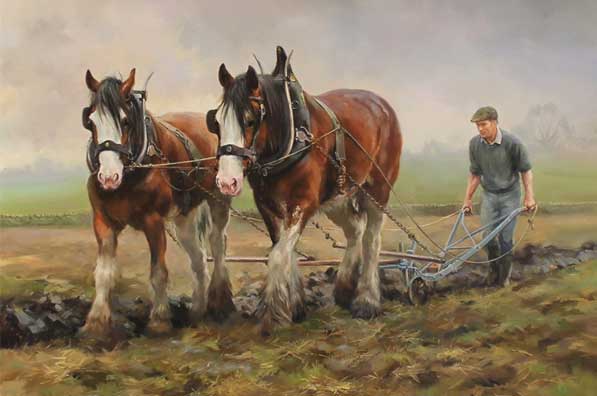
Horses were used for many kinds of work, pulling everything from carts to canal barges, multifarious agricultural tasks and increasingly hauling building materials used in the creation of the new industrial cites. If you wanted to travel you either rode, travelled in a cart or carriage or walked. The majority of the population spent their entire lives within walking distance of their birthplace. A family owning a single horse might be entirely dependent on the animal for their livelihood.
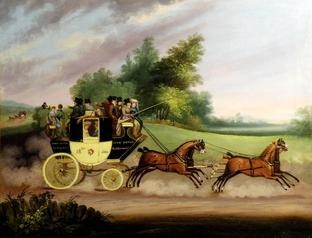
The nineteenth century was the golden age of the horse. The indispensable horse provided the power for not only vehicles that moved freight, transported passengers, and fought fires but also powered equipment in breweries, mills, mines, foundries, and machine shops. Although steam technology lightened the load on horsepower, it only became outmoded with the invention of the internal combustion engine.
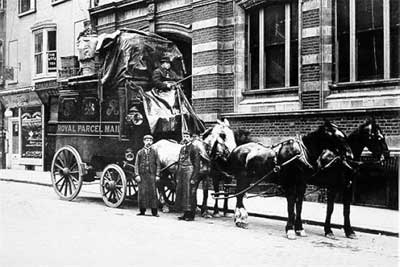
A horse could only do a certain amount of work per day - it then had to be fed, watered and rested. Hence the ‘change of horses ’ referred to in historical novels when a journey is undertaken. A stage coach was just that. A public conveyance with from two to six horses, which stopped at regular intervals or ‘stages’ in order to change horses with all possible speed before continuing the journey. If you used your own horses for perhaps the first stage of the journey, those horses could be stabled and fed and others provided at a staging post ( for a price ) and you could travel on without much delay. However, someone, your groom or stable boy had to go and collect your own horses and return them home. Otherwise you and your passengers would have to stay at the inn or staging post until such time as your horses were sufficiently rested to continue the journey. So a journey took a great deal of time and forward planning.
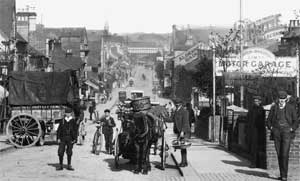
Horses and carts provided the means of transport for delivery of all sorts of items in the town from fish to furniture and there would have been a constant noise of hooves clopping along, rattling iron shod wheels, shouts of drivers and general horsey expletives. A certain amount of horsey litter in the roads * which may or may not have been cleared away , hence ’ crossing sweepers ’ boys who, for a copper or two, would sweep a way across the road for the ladies and gentlemen not wishing to soil their voluminous skirts or elegant boots. This was a popular occupation for street children who could become something of a nuisance touting for business.
Many trades were dependant on the horse:
Horse breeder / Farmer .
Producing horses, horse food - grass, hay, oats,production of straw for bedding
Livery yards

Groom
Stable boy
Ostler
Coachman
Farrier
Blacksmith
Coach builder
Wheelwright
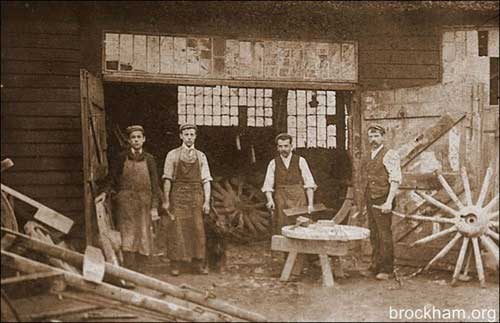
Upholsterer
Saddler
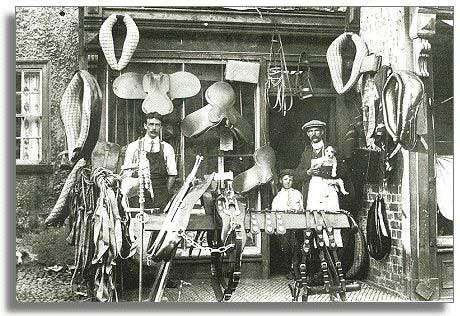
Harness maker
Tanner
Veterinary surgeon
Dead horses had to be disposed of.
* The average horse produces 9 tons (8.16 metric tonnes) of manure every year. A 1,000 pound (454.55 kilos) horse will deposit approximately 35 pounds (15.91 kilos) of manure daily plus 6-10 gallons (27.3 - 45.5 litres) of urine. Soiled bedding adds another 15-20 pounds (6.82 - 9.09 kilos) of waste daily.